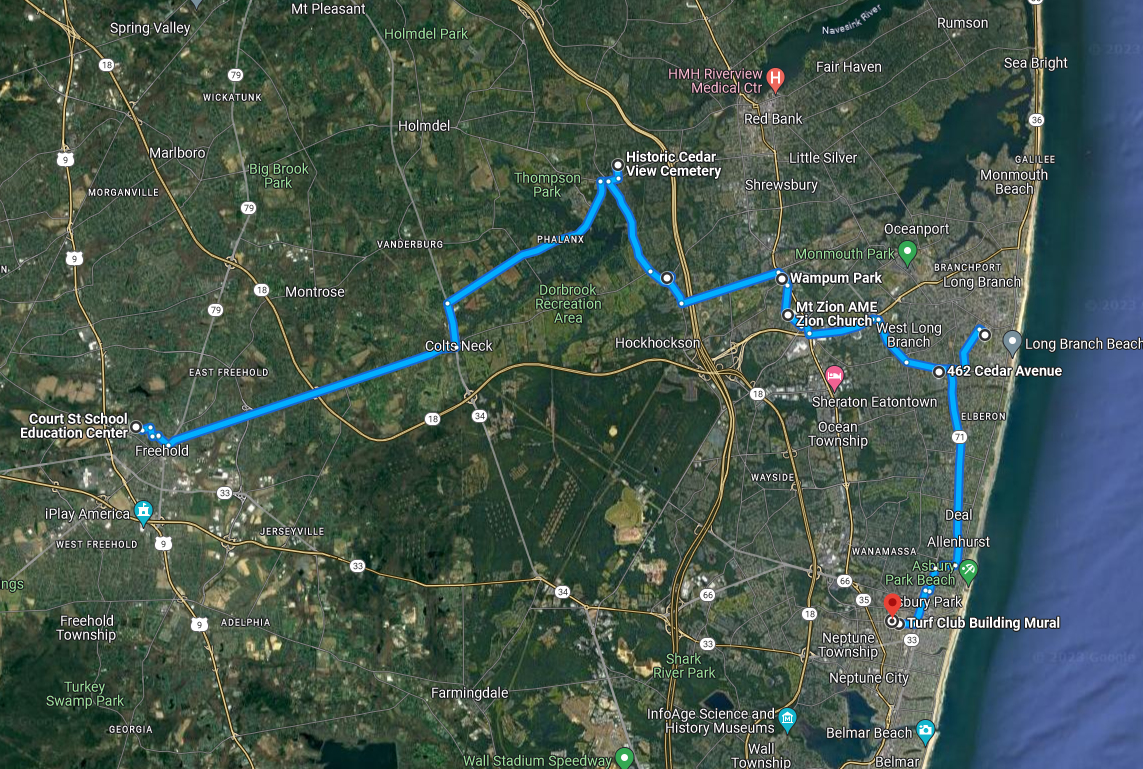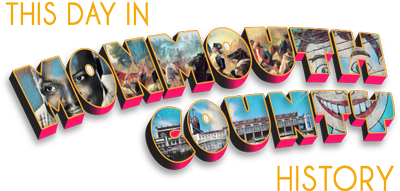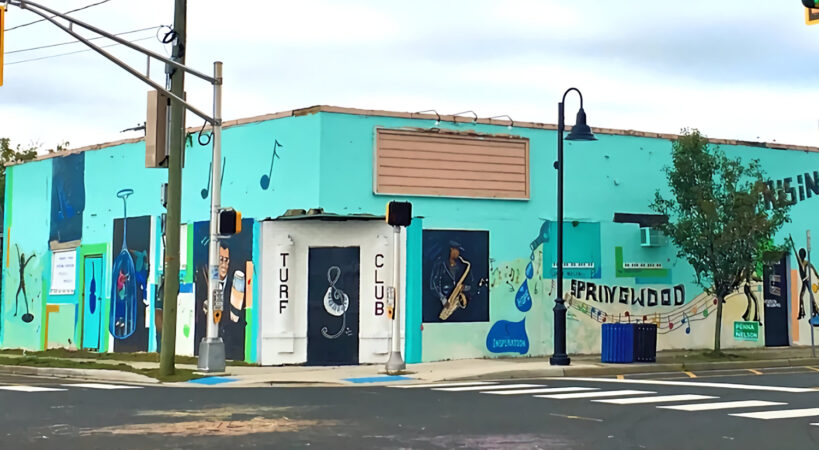Text courtesy of the Asbury Park African American Music Project, used with permission.
In the 1960s, there were dozens of music venues on the west side of Asbury Park, all along Springwood Avenue. Today, only one structure remains that was once one of these venues: The Turf Club.
The Turf Club originally opened at 1125 Springwood Avenue in 1940 and moved to 1200 Springwood Avenue in 1956, where the building remains today. It represents the last chance to preserve a physical piece of Springwood Avenue’s music history.
Icons such as Billie Holiday and Count Basie as well as local talent performed along Springwood Avenue. It was part of the Chitlin’ Circuit and lined with music venues and African American-owned businesses, many cited in the Green Book. Since the late 1950s, music was a mainstay of the Turf Club, offering local (e.g., Al Griffin, Cliff Johnson, and Dee Holland) and nationally-recognized (e.g., Clarence Clemons, who would later join Bruce Springsteen and the E Street Band) jazz and R&B acts. In 1970, civil unrest and a period of disinvestment devastated Springwood Avenue.
Historic Preservationist Elizabeth Rosin notes that the Turf Club “provides a unique physical connection to an important cultural context – the social and entertainment heritage of the local African-American community. Its cultural significance is enhanced by the loss of other buildings that shared its connection to the once-thriving African-American west side commercial district of Asbury Park.”
BLACK HISTORY TRAIL: Click here to go back to Day 2, Step 6, the stadium where hall-of-famer Sam Mills played high school football. Click here to move ahead to Day Two, Step 8, the West Side Community Center in Asbury Park.

Source:
What’s the Turf Club? (2023). Asbury Park African American Music Project. Available: https://www.asburyamp.org/the-turf-club.


Leave a Reply